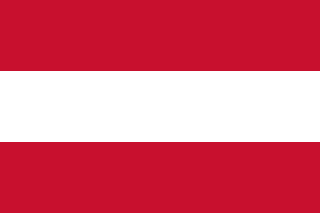Discover a comprehensive maritime overview of Austria, a Central European country without direct access to the sea, but with a strong river and lake tradition. This detailed guide analyzes the inland waterways, the strategic importance of the Danube for maritime and river transport, as well as river port infrastructures and associated economic activities. Learn how Austria optimizes its water resources for trade, tourism, and recreational boating. An enriching exploration for navigation professionals, students, and maritime geography enthusiasts.

Explore the strategic ports and maritime infrastructure of austria

Essential maritime information about Linz Port port for sea professionals

Essential maritime information about Enns Port port for sea professionals

Essential maritime information about Salzburg Port port for sea professionals

Essential maritime information about Wels Port port for sea professionals

Essential maritime information about Vienna Port port for sea professionals

Essential maritime information about Linz Port port for sea professionals
Explore the strategic ports and maritime infrastructure of austria
Located in Central Europe, Austria is a landlocked country with no direct access to the sea. However, it has a rich and strategic hydrographic network, notably thanks to the Danube River, which crosses the country from west to east for about 350 kilometers. This river is the most important waterway in the country and constitutes a crucial inland maritime artery for commerce, transport, and European connectivity. In addition to the Danube, Austria has several other rivers, canals, and lakes, such as Lake Neusiedl, which play an important role in inland maritime activity. These waterways allow Austria to actively participate in European river transport despite its lack of a maritime coastline. River port infrastructures, distributed along the Danube, facilitate the transit of goods, notably in the ports of Vienna, Linz, and Enns. These facilities are equipped for loading, unloading, and storage, contributing to an efficient logistic network in the region.
Although deprived of direct sea access, Austria has developed a dynamic inland maritime sector focused on domestic transport and international trade via the Danube. River navigation allows the transport of a wide variety of goods, including natural resources, manufactured products, and raw materials. The Danube is also a crucial axis for bioenergy and industrial transit. Furthermore, recreational boating and river tourism have seen notable growth in Austria, with many tourist routes along rivers and lakes attracting local and international visitors. River cruise boats offer cultural routes blending the discovery of historic cities with immersion in natural landscapes. Additionally, water sports, fishing, and aquatic leisure activities on Austrian lakes and rivers contribute to the local economy and residents' well-being. Finally, Austria is committed to sustainable development initiatives related to waterways, prioritizing environmental preservation and the improvement of modern infrastructures to optimize its position within the European river corridor.